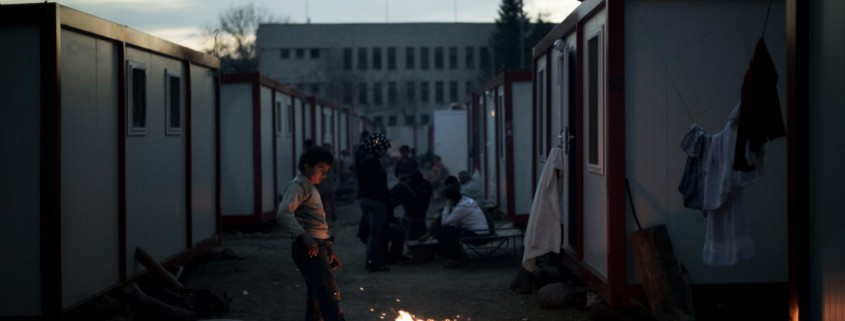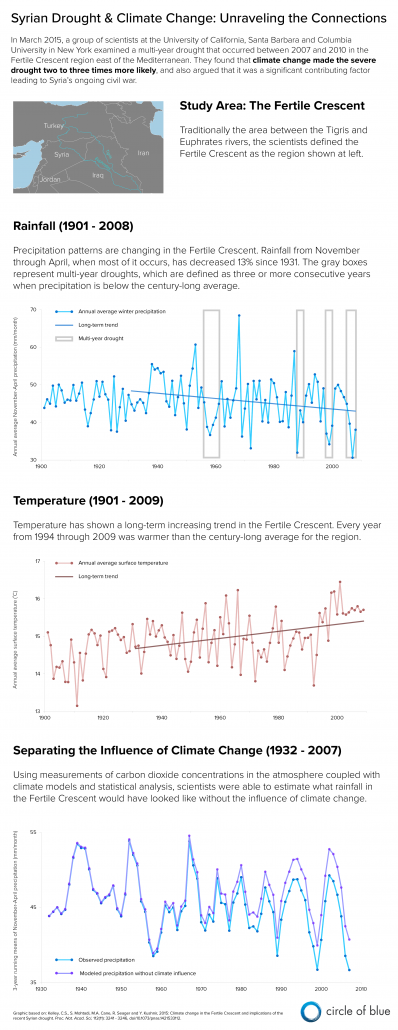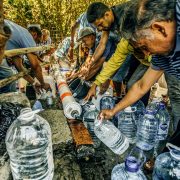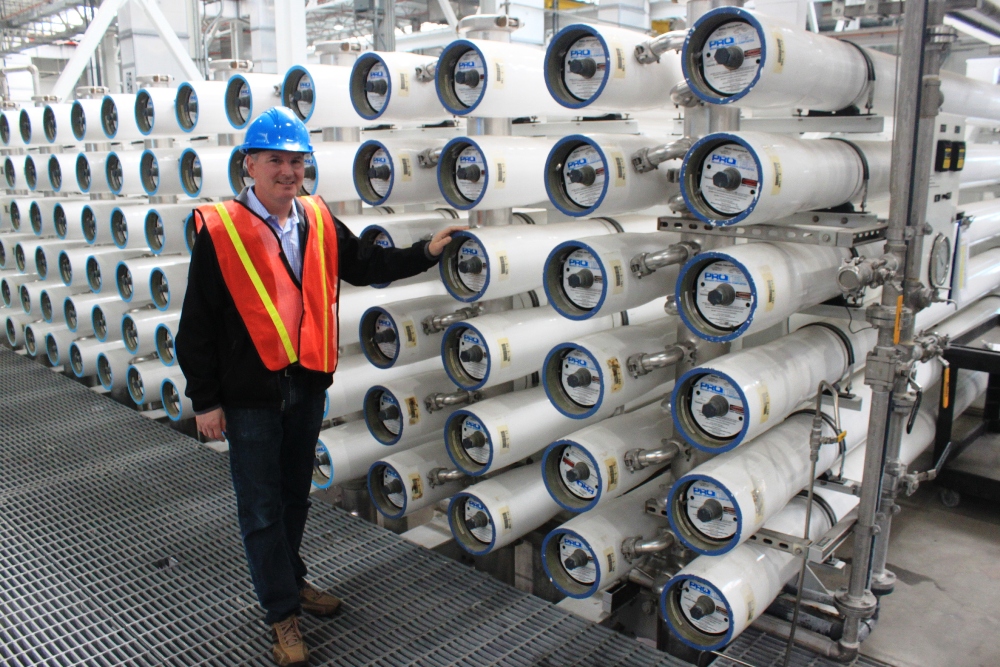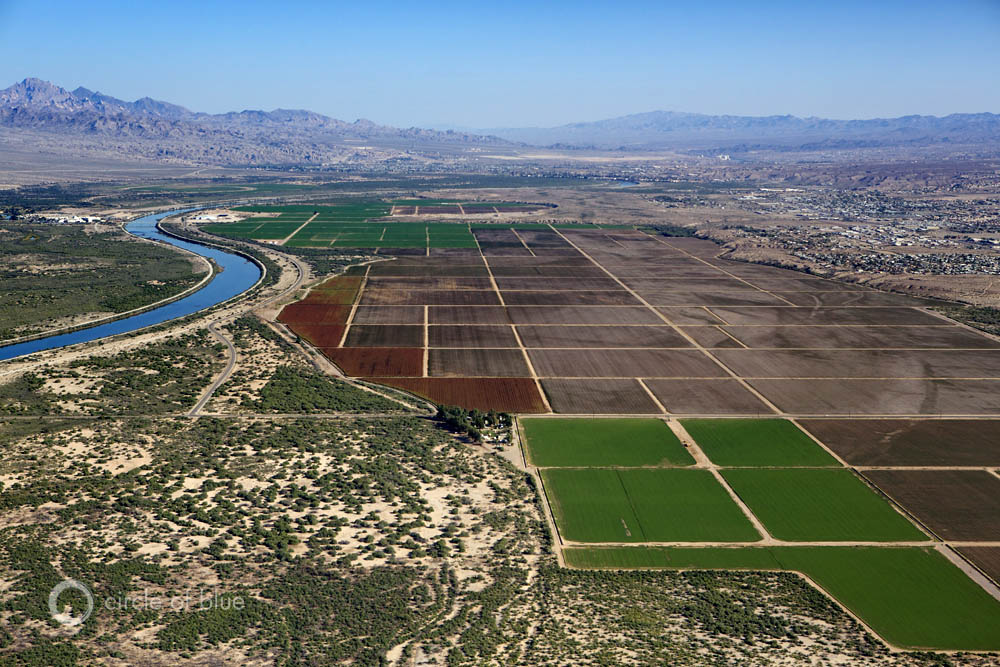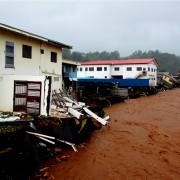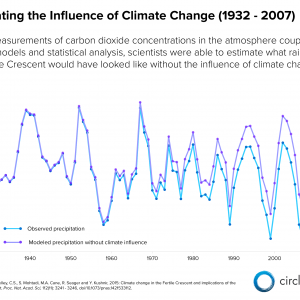Climate Change Effects On Conflict Are Complex, Tenuous, And Misunderstood
Climate change is here, but will we fight over it?
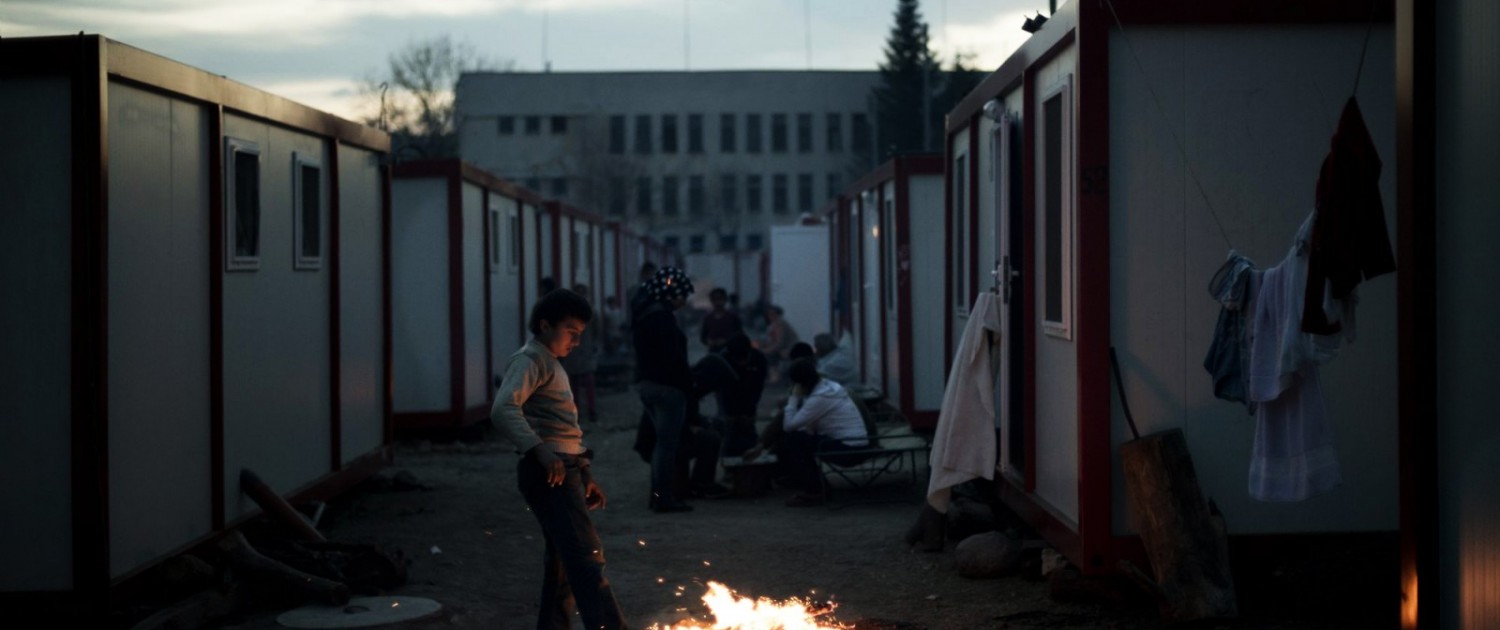
March 15 marked five years of civil war in Syria, which has created 4.8 million refugees. While some researchers have linked the start of the war to a severe drought, others are adamant that climate factors should not be substituted for poor governance and larger economic and political pressures. Photo courtesy D. Kashavelov / UNHCR via Flickr Creative Commons
By Codi Kozacek, Circle of Blue
New research by renowned climate scientist James Hansen and an international team of researchers found last week that climate change could cause massive disruptions to global sea levels and weather patterns within decades rather than centuries.
While Hansen’s study set scientists to debating its merits, the basic conclusion underscores three emerging issues of concern to all of humanity.
First is that coastal cities and island nations, most government leaders and business executives, and farmers and fishermen recognize that climate change is real, and it is happening.
Second is that global societies are reacting to climate change, though responses differ widely across nations.
And third, in a growing number of regions climate change is now viewed as a force multiplier, a powerful new stress on nations that is tilting markets for energy, farm products, and commodities, and draining national budgets. In short climate change is a significant new factor that is causing social, ecological, and economic instability. Theorists have identified climate change as among the myriad converging factors that will influence conflict around the world.
“If you were to ask me—what are the impacts of climate change on conflict? I would say, don’t talk about drought,” said Jan Selby, director of the Sussex Centre for Conflict and Security Research at the University of Sussex in England. “I would say what we need to be talking about is reducing carbon emissions in the global economy, which sooner or later will mean stopping taking oil and gas out of the ground. So far the whole discussion on climate change and conflict doesn’t mention this issue at all, which strikes me as utterly bizarre. Especially if we don’t get on with it soon and start making progress soon, the process of decarbonization is going to be a very conflict-ridden process.”
Expert evaluation of climate change as a factor in initiating conflict has, by no means, reached a consensus. Global security experts say it is completely possible for climate change to have indirect effects on conflict in the future, but acknowledge that the relationships are extremely complex and can be difficult to tease out on a country-by-country basis.
These factors include a country’s governance, infrastructure, and levels of corruption, which can interact with environmental pressures.
For example, Africa’s Sahel region, the Horn of Africa, and the Middle East are already relatively unstable politically. They are also expected to see hotter and drier temperatures under future climate change scenarios. But because the risk of conflict is already high due to poor governance issues, climate change is unlikely to shift current military or humanitarian strategies in these regions.
Instead, the long-term effects of climate change could become more of a problem—in security terms—in the emerging economies of Latin America and Asia.
“The bottom line is climate change can’t be seen as an either necessary or sufficient driver of conflict,” said Jeffrey Mazo, consulting member of the International Institute for Strategic Studies, a London-based research organization focusing on global relations and security policy. “Nothing else is. There are a dozen other factors, and I think this is an area of consensus among studies, that are drivers of conflict.”
“The most serious strategic implications are in these more nebulous areas where climate change could contribute to the destabilization of relatively stable areas,” added Mazo.
The idea that climate change will undermine international security has been circulating for at least the past decade. The thesis gained traction in the public sphere in 2007 at the height of the conflict in Darfur, a region of Sudan, and again last year in light of Syria’s civil war. The ignition points for both conflicts were linked to droughts. Both also were seen by some climate scientists, economists and diplomatic authorities as evidence that climate change could cause more wars and conflicts in the future.
“Sudan’s tragedy is not just the tragedy of one country in Africa, it is a window to a wider world underlining how issues such as uncontrolled depletion of natural resources like soils and forests allied to impacts like climate change can destabilize communities, even entire nations,” Achim Steiner, the executive director of the United Nations Environment Programme, said in a statement accompanying a 2007 report about the Darfur conflict.
Steiner’s words, like those used in many of the reports and studies warning of a link between climate and conflict, describe climate change as a force capable of multiplying the threat from other risk factors—such as poor governance or inadequate infrastructure.
In many cases, there is no quantifiable data available to prove or disprove a definitive link between a climate event, like a drought, and climate change, much less between a drought and human conflict. The relationships are so complex that they are more akin to a butterfly effect than a falling set of dominoes. But to consider only the potential for a drought to create a war, even with caveats and detours along the way, is to put the phenomena into an equation where climate change is a purely environmental input and violent conflict is the only outcome.
Instead, climate change is shaking up each facet of modern life—economic, political, and social. Major international banks and investment institutions have withdrawn their support for the coal sector in the past year as governments and climate activists urge companies to divest from fossil fuels, and renewable energy alternatives become cheaper. This month, Peabody Energy, the world’s largest private-sector coal company, indicated that it may file for bankruptcy.
In the political realm, development plans like India’s Himalayan hydropower scheme have been literally swept away by climate-related disasters. Or, in the case of South Africa’s pursuit of coal-fired energy, rendered untenable by changing hydrological cycles and steadily declining reserves of fresh water. Severe droughts in Australia and California have sparked fundamental shifts in the way farm products are produced, fresh water is transported, and how residents view, value, conserve, and use water.
Disturbances on such a large scale possess an inherent tension. Whether they result in violent conflict is impossible to know. In fact, scientific studies about conflict show that competition over scarce resources like water is much more likely to be resolved through cooperation than violence. What is clear is that climate change will force countries to reassess the way they govern resources, the way they build infrastructure, and the way they fuel their economies.
A Different Way To View Climate and Conflict
One of the greatest areas of uncertainty and stress will be the global economy, according to Jan Selby of the Sussex Centre for Conflict and Security Research. Instead of more severe droughts, floods, and sea level rise driving destabilization, it is much more likely that the economic implications of climate change and adaptation will cause discord. Responses to climate change are already beginning to shake the foundations of the planet’s largest industrial sectors—energy production, agriculture, and mining.
Even in cases where arguments have been made that drought contributes to conflict — the Syrian civil war, for example — the subsequent social disruptions were primarily the result of economic reverberations. In 2009, during the third consecutive year of drought, the Food and Agriculture Organization of the United Nations (FAO) said that most farmers in Syria who depended on rain to water their crops had suffered complete or near-total losses, while livestock herders were only able to maintain 3 to 10 percent of their animals. The report found that the income of severely affected groups had dropped 90 percent since 2006.
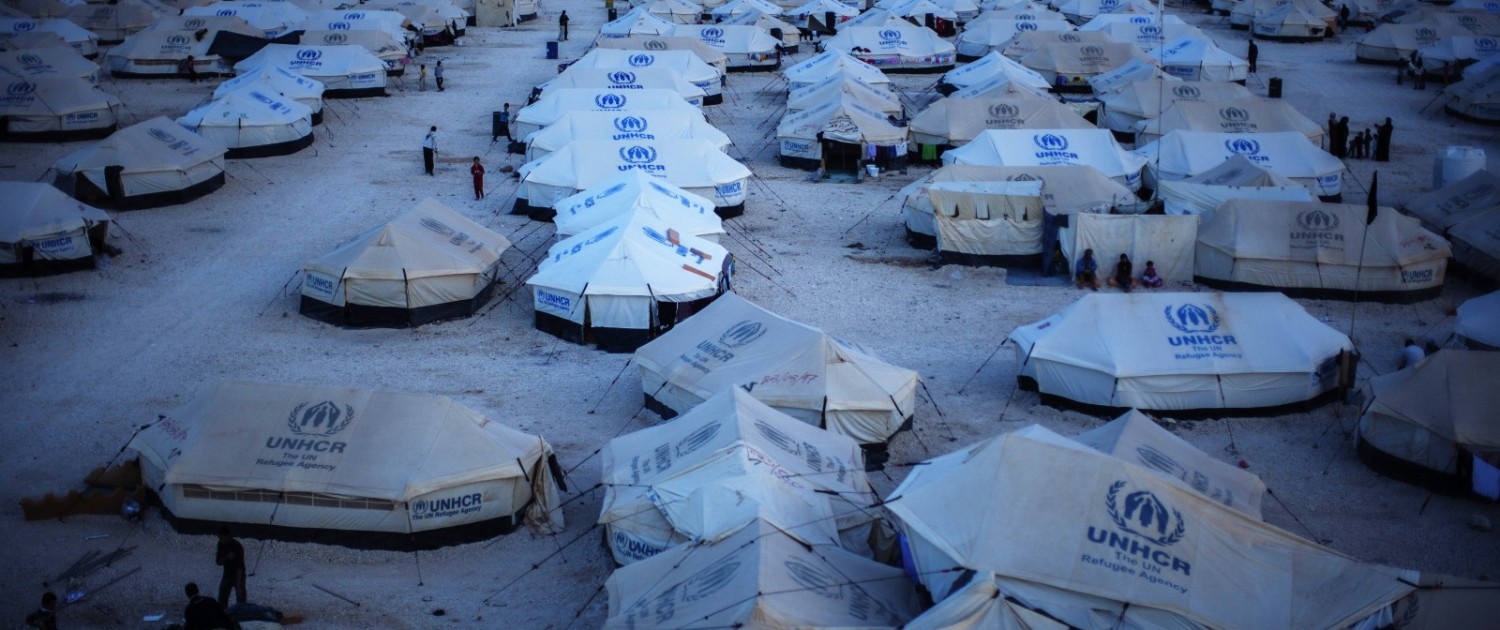
Untangling the connections between climate events, like drought, and conflict are difficult. In Africa’s Sahel, the Horn of Africa, and the Middle East, climate is just one of many forces that can contribute to hardship. Photo courtesy Brian Sokol / UNHCR via Flickr Creative Commons
The farmers’ ability to withstand the drought had been largely eroded by economic policies pursued by the Assad government. Between 2007 and 2008, prices for diesel in Syria nearly tripled as the government cut back subsidies, according to the Middle East Research and Information Project. This increased costs for farmers, who use diesel fuel to power their irrigation pumps. The government had also encouraged the expansion of wheat production and other crops by promoting irrigation. As a result, irrigated areas doubled between 1984 and 2000, depleting groundwater reserves in many agricultural areas. All of this added up to a significant migration of families from drought-hit areas to cities in 2009, though the number of migrants is disputed.
“Droughts probably shouldn’t be thought of as environmental phenomena in this respect. They should be thought of as economic phenomena, meaning phenomena that exacerbate economic problems and especially people’s adaptive and coping capacity,” said Selby. “A lot of the moving that took place needs to be understood in the context that the Northeast was the poorest and most marginalized area of Syria, where they had high levels of raw debt, where the Syrian government didn’t make any credit available to farmers and herders, and where, yes, if a drought happens, people’s earnings go down from farming and a lot of livestock would have been sold or sent to slaughter early, so people decimated their own stocks and the ability to replenish them. But the economic context is a huge reason why drought has such an effect.”
Other Factors Matter
Destabilization or pressure on natural resources, however, does not always equal conflict. Regions with well-functioning and responsive governments, like Australia and California, have shown great capacity to resolve conflicts over water before they escalate to violence, even amid unprecedented droughts. Moreover, the majority of scientific studies actually show that people are more likely to cooperate in times of resource stress than fight, especially when it comes to water. These outcomes should not be discounted when discussing the potential links between climate change and conflict, according to Elizabeth Hartmann, professor emerita of development studies at Hampshire College in Massachusetts.
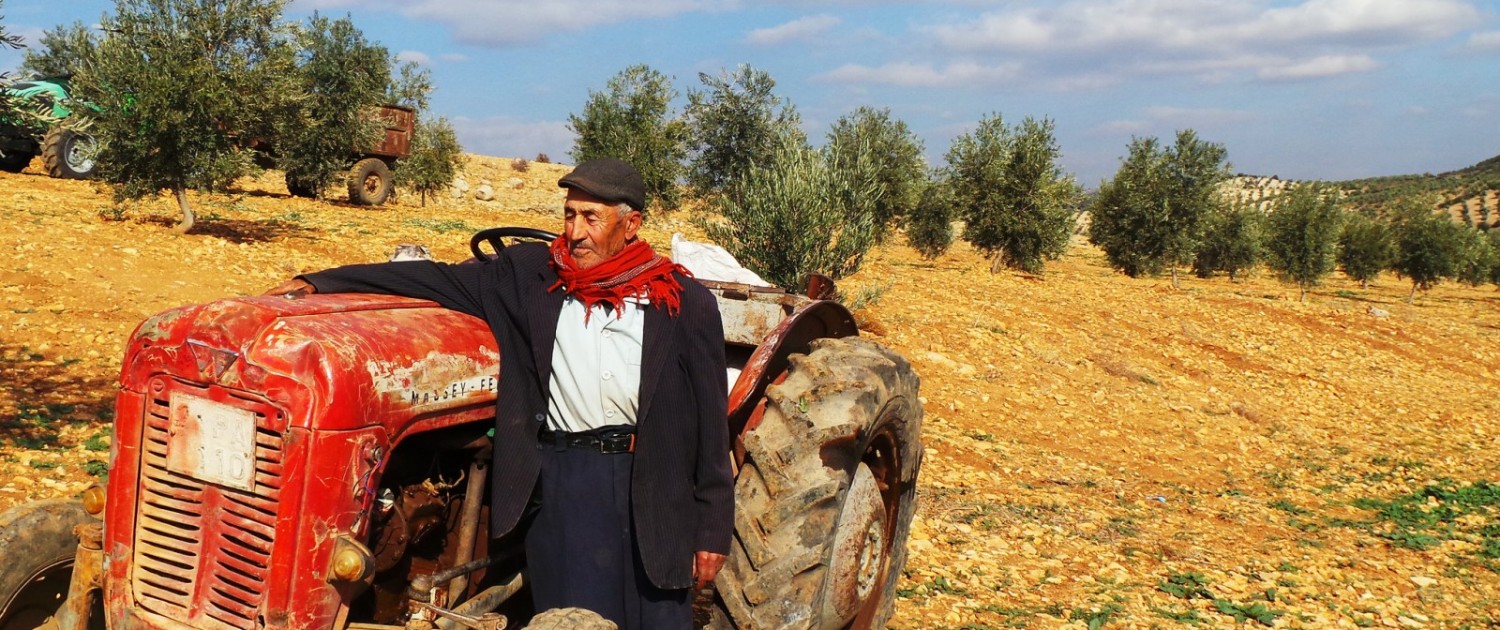
Climate change pressures will likely be felt largely through economic forces, making economic development key for maintaining stable communities. Here, a new olive oil plant in Kilis, Turkey aims to provide job opportunities to a community that has doubled in population due to the influx of refugees from Syria. Photo courtesy UNDP in Europe and Central Asia via Flickr Creative Commons
“To blame poor people or think that poor people are going to immediately engage in violent conflict when resources are scarce, it kind of relies on—and I don’t think people are being intentionally racist—but it relies on old colonial narratives about inferior races and barbarism,” said Hartmann. “Especially in the case of Africa, where a lot of this discourse is focused, it really bolsters the view of poor Africans as savages and barbarians. I’m not saying people are intentionally doing this, but they are not interrogating their own stereotypes of people and where they come from historically.”
She warned that labeling conflicts like the Syrian civil war as ‘climate wars’, and calling Syrian war refugees ‘climate refugees’, can also create a sense of inevitability that these events will become a new normal.
“It makes people feel that this is going to keep on happening, that there is no solution because climate change is going to keep on happening, so we need to beef up borders, beef up security in order to protect ourselves from the people who are going to be set loose by climate change,” Hartmann said. “But most climate change-related migration literature shows that most migration is likely to be within national borders, not across them.”
A news correspondent for Circle of Blue based out of Hawaii. She writes The Stream, Circle of Blue’s daily digest of international water news trends. Her interests include food security, ecology and the Great Lakes.
Contact Codi Kozacek

